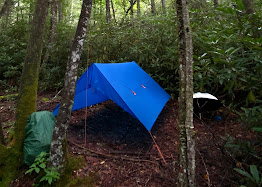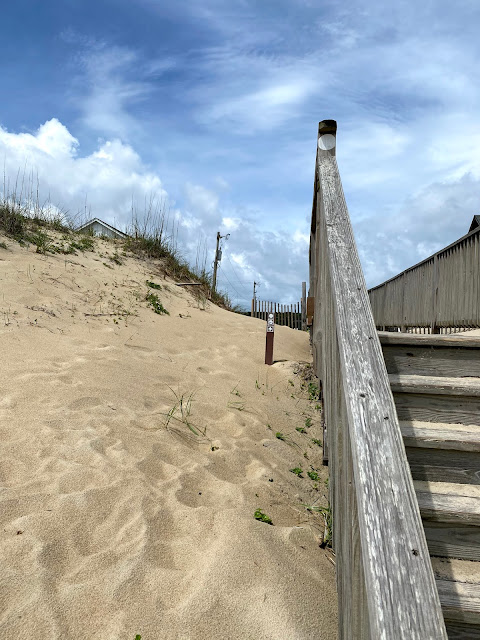Gear
Time to count ounces!
 Xero Shoes Mesa Trail - 16.7 oz/pair I've worn Xero Shoes for almost two years now. I have the Prio which I wear as an everyday shoe. I then purchased a pair of the Z-trail sandals (10.7 oz/pair), which I will have along on the hike. For most of the hike I plan to have the Mesa Trail shoe. I've only had that shoe for a few months but feel much safer in terms of grip when hiking than I did hiking in the Prio. We've had a lot of rain around here and it preforms well in mud, however, it can be extremely slick on wet rocks. I've seen a huge benefit from these shoes in terms of knee pain. The thing to remember is you must transition to these types of shoes. Xero offers a lot of information on their website about barefoot and natural movement. I'll keep you posted as to how these hold up.
Xero Shoes Mesa Trail - 16.7 oz/pair I've worn Xero Shoes for almost two years now. I have the Prio which I wear as an everyday shoe. I then purchased a pair of the Z-trail sandals (10.7 oz/pair), which I will have along on the hike. For most of the hike I plan to have the Mesa Trail shoe. I've only had that shoe for a few months but feel much safer in terms of grip when hiking than I did hiking in the Prio. We've had a lot of rain around here and it preforms well in mud, however, it can be extremely slick on wet rocks. I've seen a huge benefit from these shoes in terms of knee pain. The thing to remember is you must transition to these types of shoes. Xero offers a lot of information on their website about barefoot and natural movement. I'll keep you posted as to how these hold up.
I feel like there are some people that may have panic attacks when it comes to gear and weight. There is so much information out there and I feel at times a lot of pressure to lighten the load. The mantra, "hike your own hike" applies to gear, so take a deep breath load up what you want and don't worry if you meet someone on trail that tells you you could save an ounce by...xyz. Take the feedback with a "thanks for the advice", use it if you like it or ignore and continue hiking.
On the AT I probably carried 35 lbs (with food) for most of the trail. For the last month, I inched up to 45 lbs (remember I went SOBO, finished on December 17th, it was 9 degrees that morning). I do wish to lighten the load but will do so only to the extent that it is physically, mentally and financially feasible. You need to be sure that you are mentally happy with the gear you have, that said, it's great to stretch your comfort zone sometimes. Try out new methods, borrow a friends shelter, hammock or backpack etc...for a short trip and see what you like or don't like. Find what works for you, but be willing to embrace something new...like sewing.
Below you will find some of my main components. I've been tempted to update some things and eventually I will but once you see the actual weights you can make better decisions. Just as an example after weighing all my gear, I could update my pack, shelter and sleeping systems and save 1.3 oz! It would only cost $1,097!
Shelter System - 31.1 oz (Includes: stuff sack, stakes, and tyvek ground cloth)
Ray Way Tarp Kit: I was the high school student that went to his grandmothers and asked her to help with a sewing project. She taught me to sew and together we made a tarp that has lasted 18 years.
Pack - 9.5 oz
Ray Way Backpack: I made this pack in 2009 after the JMT so it has not gone on a really long adventure but has done many weekend trips and has had some issues due to my sewing, however, since I sewed the pack I understand how to repair what has broken. I think it will be perfect for this hike.
Sleeping System - 34.3 oz
Ray Way 40 degree (25 oz) or 20 degree (35.6 oz) quilt as needed: I used the 40 degree quilt on the AT added a fleece liner in the Winter.
Ridge Rest foam sleeping pad (8.35) : Serves as the frame of my pack which is partly why I choose this over inflatable. I have the therm-a-rest Neo-air and may use it along parts of the trail but I'm comfortable just being on the ground.
Cooking System - 13.1 oz ( Ti cook pot, Stove kit, lighter, empty fuel bottle, stuff sack and utensil)
Etowah Outfitters Alcohol Stove
Toaks 1100mL Ti Pot
Footwear - Zero drop and close to barefoot. You'll feel the rocks and roots
 Xero Shoes Mesa Trail - 16.7 oz/pair I've worn Xero Shoes for almost two years now. I have the Prio which I wear as an everyday shoe. I then purchased a pair of the Z-trail sandals (10.7 oz/pair), which I will have along on the hike. For most of the hike I plan to have the Mesa Trail shoe. I've only had that shoe for a few months but feel much safer in terms of grip when hiking than I did hiking in the Prio. We've had a lot of rain around here and it preforms well in mud, however, it can be extremely slick on wet rocks. I've seen a huge benefit from these shoes in terms of knee pain. The thing to remember is you must transition to these types of shoes. Xero offers a lot of information on their website about barefoot and natural movement. I'll keep you posted as to how these hold up.
Xero Shoes Mesa Trail - 16.7 oz/pair I've worn Xero Shoes for almost two years now. I have the Prio which I wear as an everyday shoe. I then purchased a pair of the Z-trail sandals (10.7 oz/pair), which I will have along on the hike. For most of the hike I plan to have the Mesa Trail shoe. I've only had that shoe for a few months but feel much safer in terms of grip when hiking than I did hiking in the Prio. We've had a lot of rain around here and it preforms well in mud, however, it can be extremely slick on wet rocks. I've seen a huge benefit from these shoes in terms of knee pain. The thing to remember is you must transition to these types of shoes. Xero offers a lot of information on their website about barefoot and natural movement. I'll keep you posted as to how these hold up.I'll also note here that the secondary shoe in my opinion is important. I'm comfortable, if needed, having to hike a full day in the sandals. On the AT I had some foot trouble that ultimately left me walking a 25 mile day in crocs. My feet already hurt but I'm personally happy I didn't just have flip flops as my camp or water shoe.
Water System - 9.1 oz
Sawyer Squeeze system with Smartwater bottles on this trip. First time I've updated my water bottles in a while. I used Gatorade bottles for a long time that are really durable. The Smartwater bottles seem a lot less durable but they do pack better and the sawyer squeeze screws onto the top as a plus
Electronics (luxury items) - 17.7 oz
To be clear I don't need any of this so when I stated earlier I could save 1.3 oz by spending $1,097 on new gear I could also save over a pound by doing away with my electronics. I'm brining an iPhone along as my camera and with that a small power bank, the Goal Zero Flip 24 for recharging. I have some headphones and all the necessary cords to charge items. I carried a larger much heavier camera on my AT thru-hike but now the iPhone camera is at a higher level than anything on the camera market that I would consider packing. My flip phone camera just didn't cut it when I was hiking the AT.
Bear Canister - 40.5 oz! Ouch. I lived out west for a while so I have the Bear Vault; bear resistant food storage is required in a few areas along the MST. Consult the guide and updated NPS or USFS websites on which areas. I don't have any myself but I've heard good things about the Ursacks (7.6 oz). Many years ago when I first looked into them I know they were working to get more approval and it looks like they have some, however, I know USFS along the MST does say "solid" container.
That is all the major stuff the rest is just personal items and of course essentials for safety. Even with the apps you can get on phones I like to have an actual map along with a compass. I also know how to use them which is important. When Covid-19 hit much of the Outdoor Industry was asking people to remain home because any rescues take away resources and your rescue might be delayed. I understand the thinking behind that message but they should really get back to the messaging of you get yourself into something you better be prepared to get yourself out at ALL times.
I'm within two weeks of the start! Let me know if you have any questions on any of this gear? I'm happy to answer questions or give my thoughts when possible.




Comments
Post a Comment